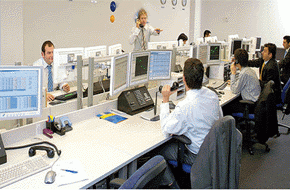
Market price action has been fairly minimal across the board. Rising Middle East tensions see a mild risk-off tone and oil prices continuing to rally, while the NZD is down slightly.
President Trump has been active on Twitter overnight, saying that US missiles “will be coming” to Syria, and warning that he was willing to challenge Russia directly in launching a military strike against Syrian President Bashar al-Assad’s forces over an alleged chemical-weapons attack. This followed the head of the Russian military saying that his forces in Syria would not only shoot down any missiles that threatened them but would target the source of the weapons. Later, Trump tried to diffuse the increased US-Russia tension, tweeting that “there is no reason” for the US and Russia to be at odds and appeared to plead for an end to the “arms race.” Also related to rising Middle East tension, Saudi Arabia’s air defence forces intercepted a missile over the capital city of Riyadh and a couple of drones in the countryside, in the latest attacks by Iranian-backed Yemeni rebels.
The focus on Middle East tensions has seen a mild risk-off tone develop and helped drive oil prices up around 2% to fresh highs. WTI hit the $67 mark and Brent hit the $73 mark.
The other key news overnight was US CPI inflation for March coming in line with expectations, with the annual core figure showing the expected jump up to 2.1% y/y. Digging into the second decimal place the data were marginally on the softer side of the ledger. The data confirm that US inflationary pressure is gradually building. The FOMC minutes of the March meeting revealed an in-depth discussion of rising US trade tensions and this presented some downside risk to the outlook. Still, a number of members thought the outlook might warrant a “slightly steeper” rate hike path, with the significant fiscal policy growth-boost getting some airtime.
US equities have spent most of the session in negative territory, with the S&P500 currently down 0.2%. US 10-year rates fell a few basis points to as low as 2.75%, driven by the risk-off tone, but have since recovered to 2.79% near the same level as the NZ close. Over recent sessions, there has been little pulse in UST10s despite the surge in oil prices. The market appears to be significantly short and that is limiting upside pressure in rates at present.
The NZD has traded in a fairly narrow range and currently sits at the bottom end, around 0.7350, after finding some resistance overnight just under 0.7380. It is flat to down slightly on all the major crosses but the moves haven’t been significant. This week NZD/AUD has met some resistance just above the 0.95 mark and that remained the case overnight and the cross sits at 0.9480.
RBA Governor Lowe’s speech contained little on monetary policy. He repeated the line the next move in rates is more likely up than down, but that there is no strong case for a near-term adjustment in policy. The RBA is clearly waiting for further progress in reducing unemployment and having inflation return to the target band.
This morning the RBNZ’s McDermott will give a speech on inflation targeting. No doubt we’ll learn how great a job the RBNZ is doing in this regard, operating with its flexible inflation targeting framework. With data next week likely to show CPI inflation near the bottom of the target range and the RBNZ’s forecasts showing that it’ll take more than 2 years to get back to the middle of the range, there is more scope for dovish than hawkish overtones. Against a backdrop of global policy tightening, the market doesn’t fully price an NZ rate hike until mid-2019, still more than a year away.
The ECB’s Draghi spoke last night but he didn’t move the market. He noted that external risks are currently the main source of concern for policy makers. The direct effects of the proposed US-China import tariffs are not big but he was “especially mindful” of the possible impact on confidence. He added that the euro area’s steadfast expansion is bolstering his conviction that wages will eventually pick up...and therefore inflation will respond to the improvements in the economy.
Get our daily currency email by signing up here:
Daily exchange rates
Select chart tabs
BNZ Markets research is available here.


We welcome your comments below. If you are not already registered, please register to comment.
Remember we welcome robust, respectful and insightful debate. We don't welcome abusive or defamatory comments and will de-register those repeatedly making such comments. Our current comment policy is here.